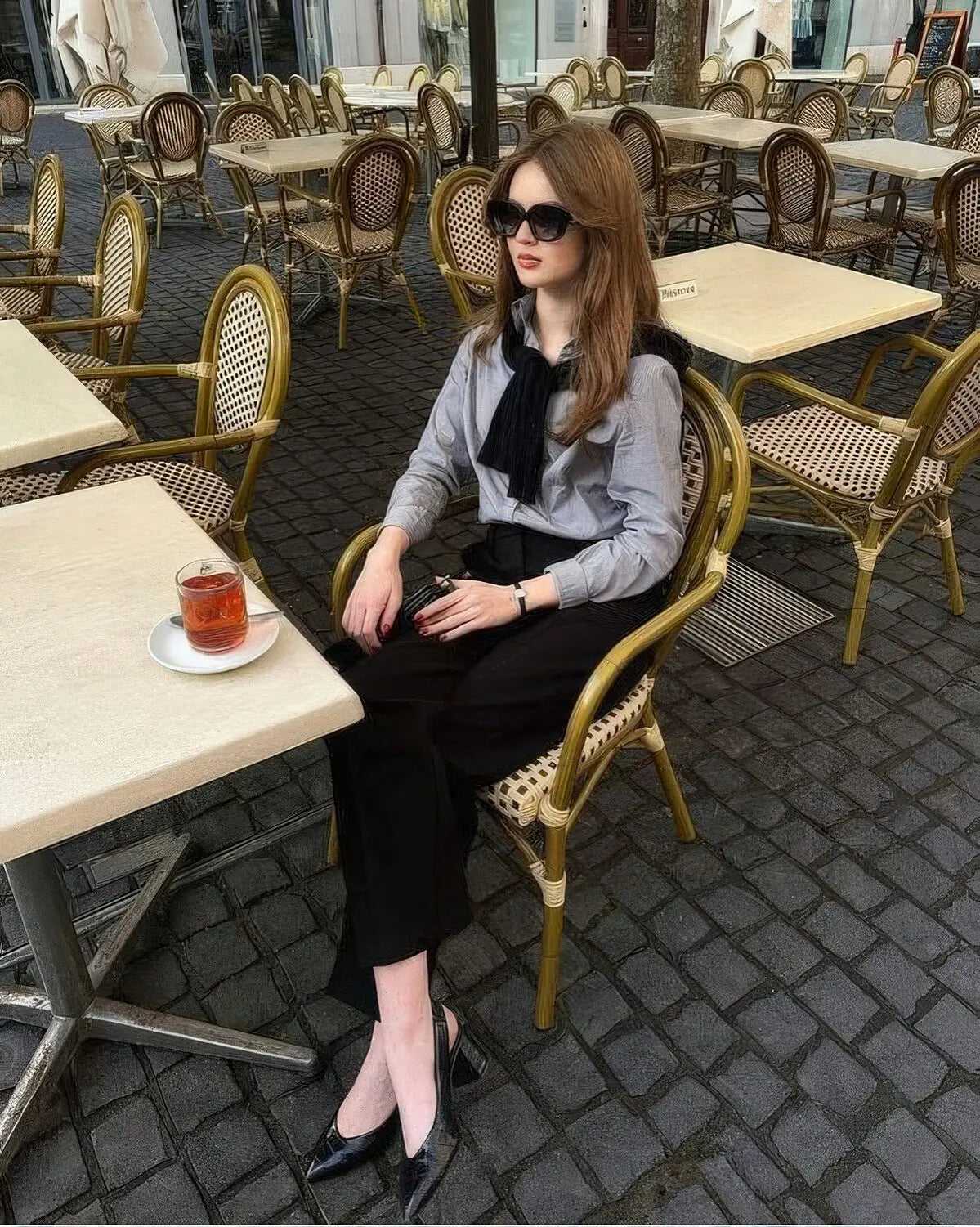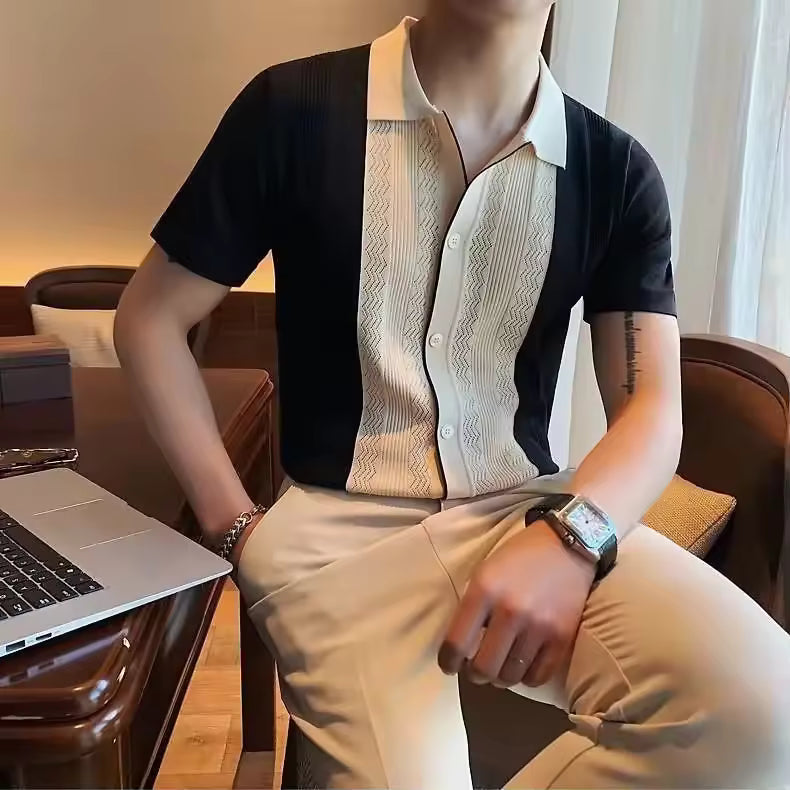
How to Achieve Old Money Style
A 2025 Road Map to Quiet Luxury, Timeless Fit, and Sustainable Wardrobe Building
Old money style is shorthand for a look—and a lifestyle—that signals confidence without chasing attention. It is not tied to price tags or viral trends. Instead, it rests on quality, restraint, and impeccable maintenance. In a digital world flooded with fast fashion and logo‑heavy “dopamine dressing,” mastering old money style sets you apart as someone who invests in longevity.
This guide breaks down every element you need to adopt the look in 2025: mindset, fabrics, color palette, tailoring, accessories, grooming, and daily habits. Follow the steps below, and you will build a wardrobe (and a presence) that feels rich, polished, and—most important—authentic.
1. Start With the Mindset—Quality, Consistency, Discretion
Before you shop, lock in three guiding principles:
-
Buy the best you can afford, then maintain it.
-
Choose timeless cuts over short‑term trends.
-
Show polish, not logos.
Everything that follows serves these points. When a potential purchase conflicts with one principle, leave it on the rack.
2. Build a Foundation of Neutral Colors
Old money wardrobes rely on versatile shades. They mix effortlessly, hide minor wear, and remain in style for decades.
Primary neutrals
-
Navy
-
Charcoal
-
Camel
-
Soft white
Secondary neutrals
-
Olive
-
Chocolate
-
Stone
-
Cream
Heritage accent tones (use sparingly)
-
Burgundy
-
Forest green
-
Deep mustard
Create a palette card on your phone. If a new piece clashes, skip it.
3. Prioritize Natural, Durable Fabrics
True luxury comes from how fabric feels, breathes, and ages. Focus on:
|
Category |
Best Fabrics |
Why They Matter |
|
Shirts |
Long‑staple cotton Oxford or poplin |
Durable weave, smooth hand‑feel |
|
Trousers |
Wool flannel, worsted wool, high‑twist cotton |
Hold crease, drape cleanly |
|
Knitwear |
Cashmere, merino |
Insulate without bulk |
|
Jackets/Coats |
Wool hopsack, tweed, camel hair |
Structure plus breathability |
|
Shoes/Belts |
Full‑grain leather, suede |
Develop rich patina |
Synthetic blends are fine for technical outer shells, but keep core garments natural. They will look better and last longer.
4. Fit Is Your Silent Luxury
Perfect fit elevates an affordable piece and exposes a costly mistake. Use a tailor for:
-
Shoulder and sleeve corrections on jackets
-
Trouser hem and waist tweaks
-
Darts to remove billow on shirts
Fit checkpoints
|
Garment |
Must‑Hit Details |
|
Shirt |
Shoulder seam at bone edge, no chest pulling |
|
Trouser |
Waist snug with two‑finger room, slight or zero break |
|
Blazer |
Lapels lie flat, one finger between button and chest |
|
Coat |
Sleeve shows 1 cm of jacket cuff, back vents lie closed |
Allocate 10 percent of your clothing budget for alterations.
5. Curate High‑Impact Staples First
Start with versatile pieces you will wear weekly. Here is a minimalist capsule:
-
Crisp white Oxford shirt
-
Pale blue poplin shirt
-
Navy unstructured blazer
-
Charcoal pleated wool trousers
-
Mid‑weight cotton chinos in stone
-
Cashmere crewneck in camel
-
Dark brown penny loafers
-
Black cap‑toe Oxfords
-
Camel single‑breasted overcoat
To see how quality staples look and drape, browse proven examples in the Old Money Shirts collection, the structured options in Old Money Pants, and the craftsmanship details in our Old Money Shoes. Those three lines cover the core categories above.
6. Layer Smart: Knitwear and Outerwear
Knitwear
-
A lightweight cashmere crewneck layers under blazers year‑round.
-
A merino roll‑neck replaces a shirt on cold days and adds texture.
-
Neutral solid colors offer maximum pairing options.
Outerwear
-
Navy or camel overcoat suits work and weekends.
-
A trench with removable liner handles rain for three seasons.
-
Stick to classic lapel widths and horn buttons.
With just two coats and two sweaters, you can cycle outfits across climates.
7. Shoes: Assets, Not Accessories
Shoes anchor the old money look. Rules:
-
Leather quality matters more than design flourishes.
-
Construction should allow resolving (Goodyear, Blake).
-
The finish must stay polished but not mirror‑shiny.
Rotation strategy
-
Wear a pair no more than two days in a row.
-
Insert cedar trees after each use.
-
Condition quarterly; resolve before a hole appears.
A well‑kept loafer can last a decade—proof that stewardship counts.
8. Accessories: Understate, Elevate
-
Watch: Clean dial, no oversized case, leather strap.
-
Belt: Same leather tone as shoes, small buckle.
-
Pocket square: White linen or subtle pattern; fold crisp.
-
Scarf: Silk in summer, wool or cashmere in winter; no logos larger than a postage stamp.
-
Bag: Structured leather brief or tote in dark brown or tan.
Each item adds function first, flair second.
9. Grooming, Posture, and Presence
Old money impression relies on more than garments.
-
Hair trimmed regularly, natural tones.
-
Facial hair is neat or clean‑shaven.
-
Nails are short and clean.
-
Fragrance subtle—two sprays max.
-
Stand tall, pace movements, control volume when speaking.
These habits cost little yet amplify wardrobe impact.
10. Sustainability: The Hidden Edge
Quiet luxury dovetails with eco‑responsibility. Extending a garment’s life by nine months cuts environmental impact up to 30 percent, according to research summarized by the Old money methods—buy well, repair, resolve—align with that finding. You save resources and keep trash out of landfills.
11. Etiquette and Digital Footprint
Clothing speaks, but behavior confirms. Key traits:
-
Politeness: Please, thank you, and punctuality.
-
Discretion: Share wins quietly; avoid bragging.
-
Digital restraint: Private social accounts, fewer selfies, more substance.
Fashion analysts at the Business of Fashion note that the rise of quiet luxury is as much about measured behavior as muted branding. Consumers now equate subtle conduct with genuine affluence.
12. Shopping Plan for 2025 and Beyond
-
Audit wardrobe each season; donate what you never wear.
-
List gaps, then budget monthly toward filling them with quality.
-
Research mills for fabric reliability (e.g., Loro Piana, Scabal).
-
Time purchases during end‑of‑season sales for savings.
-
Choose experiences (tailoring sessions, shoemaking workshops) over impulsive online hauls.
Patience ensures every addition reinforces your style story.
13. Travel Packing Like Old Money
One carry‑on, endless outfits:
|
Item |
Reason |
|
Navy blazer |
Dresses up jeans, dresses down trousers |
|
Grey flannel trousers |
Resist wrinkles |
|
Cream chinos |
Warm‑weather option |
|
Two shirts |
White Oxford, blue poplin |
|
Cashmere sweater |
Lightweight layer |
|
Brown loafers |
Versatile day to evening |
|
Slim sneakers |
Airport comfort |
|
Silk scarf |
Color accent |
|
Foldable umbrella |
Preparedness is polish |
Iron everything before departure; hang on arrival. Your case stays light, and you remain impeccable.
14. Care Rituals—Minutes Now, Years Later
Daily: Brush suits, air knitwear, add shoe trees.
Weekly: Steam wrinkles, polish shoes, check loose threads.
Monthly: Condition leather goods, de‑pill sweaters, rotate storage.
Seasonal: Dry‑clean coats, swap wardrobes, store with cedar.
Treat your clothes like a classic car. They will reward you with loyal service.
15. Common Mistakes to Avoid
|
Error |
Impact |
Solution |
|
Logo overload |
Reads insecure |
Neutralize branding |
|
Skipping tailoring |
Cheap look |
Budget alterations |
|
Synthetic shine |
Looks plastic |
Favor natural fibers |
|
Trend chasing |
Dates fast |
Buy classics |
|
Neglecting shoes |
Ruins outfit |
Polishing routine |
One misstep can undercut dozens of good choices. Guard against them.
16. Example Week of Old Money Looks
|
Day |
Occasion |
Outfit |
|
Monday |
Office |
Blue poplin shirt, grey trousers, navy blazer, brown loafers |
|
Tuesday |
Client lunch |
White Oxford, camel crewneck, chinos, suede derby |
|
Wednesday |
Remote work |
Cashmere sweater, dark denim, penny loafers |
|
Thursday |
Networking |
Striped shirt, navy suit, black Oxfords |
|
Friday |
Casual dinner |
Cream polo, flannel trousers, loafers |
|
Saturday |
Museum visit |
Linen shirt, chinos, white sneakers |
|
Sunday |
Brunch |
Light knit, rolled chinos, suede loafers |
Rotate pieces; add a scarf or pocket square to shift tone. Seven days, no wardrobe fatigue.
17. Legacy Mindset—Beyond Clothes
Old money style is a long game. Start a style ledger:
-
Track purchases with cost, wear count, and care dates.
-
Note tailors, cobblers, dry‑cleaners you trust.
-
Record compliments; they reveal which pieces resonate.
Over years, this ledger guides smarter buys and deepens your personal brand.
18. Final Takeaway
Achieving old money style is not about imitating someone else’s birthright. It is about adopting habits that prioritize lasting quality, quiet confidence, and respect for resources. When you invest in fit, fabric, and care—then pair those choices with measured behavior—you broadcast wealth of character, not just capital.
Begin with one cornerstone piece this month. Maybe it is a flawless white Oxford from the Old Money Shirts line. Wear it, keep it pristine, and feel the difference. Then build outward—trousers, shoes, blazer—always following the principles in this guide. By next year, your reflection will tell a story of quiet luxury that no logo can rival.



